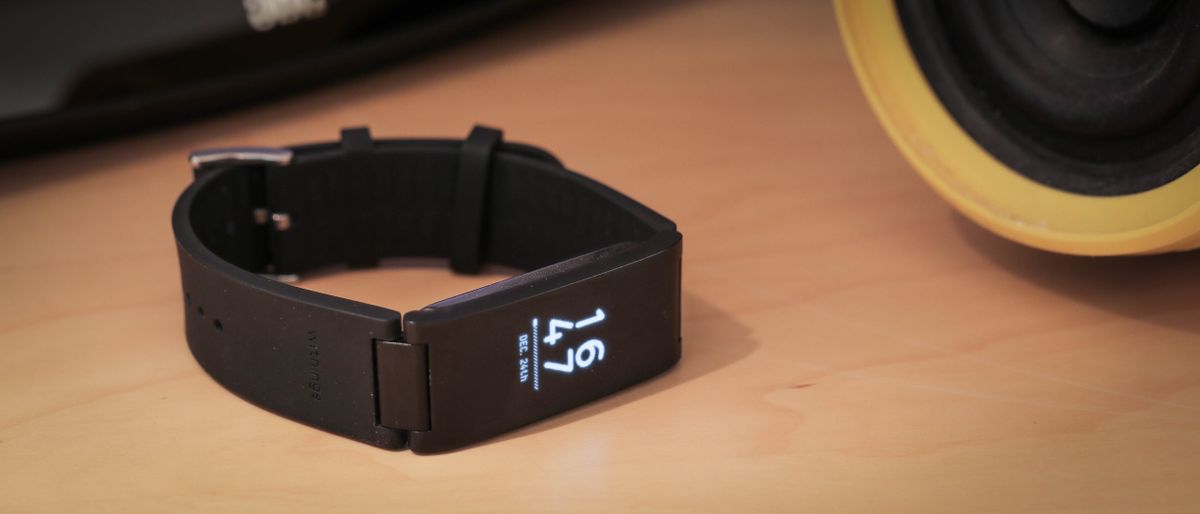TechRadar Verdict
An excellent looking fitness tracker that costs a fair whack and lacks standalone GPS. Despite limited functionality, it offers accurate sleep tracking and sports a sleek, premium design. The fact its 20 day battery could require as few as 20 charges a year is also mightily appealing.
Pros
- +
Premium build
- +
Simple, stylish look
- +
Great battery life
Cons
- -
Limited sports functionality
- -
Glitchy battery meter
- -
Connected GPS, not standalone
Why you can trust TechRadar
Update: We've had an issue with our Withings Pulse HR where cracks have appeared at the top and bottom of the tracker . Withings has confirmed to TechRadar it was because of a manufacturing issue in the first batch of products, and the issue has since been solved on more recently produced Pulse HR trackers.
If you've already bought a Pulse HR and you've found it has cracked without any accidental damage, you can contact Withings to get a replacement for free. For the full story, check out our article on the Withings Pulse HR cracking problem.
Original review: Withings is a massive deal in the world of connected health. It entered the wearable space with hybrid analogue watches that packed fitness tracking functionality. Since then, it has launched Wi-Fi connected scales, a wireless blood pressure monitor and has been both bought and sold again by none other than Nokia.
Now, back to being owned by Withings, the French company is going after the likes of the Fitbit Alta HR more directly with its Pulse HR, a fitness tracker that looks mighty sleek, packs a heart rate monitor, connected GPS functionality and tracking support for a range of workouts.
Smarts aside, the highlight feature has got to be its 20-day battery life, putting it firmly in the top-end of the screen toting fitness trackers ranking, alongside the Huawei Band 2 Pro.
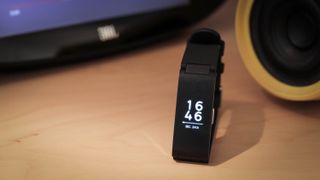
Good start, right? Right! But, that isn’t to say it has everything we’d expect from a tracker of its price. There’s no standalone GPS - as found in the Band 2 Pro. This means with location tracking functionality relying on a connected GPS, you’ll need your smartphone on your person if you want to track runs or cycles. In addition, while waterproof, it won’t track swimming strokes, only duration and calories burned.
It’s also definitely not a smart watch, with notifications on its tiny display offering limited utility and no interaction. As for interaction with the Pulse HR itself, the body is touch sensitive and there’s a button on the right hand side.
Withings Pulse HR price and release date
The Withings Pulse HR was announced and released at the tailend of 2018. Costing $129.95 / £119.95 (around AU$185), this definitely isn’t a cheap tracker - but are its great looks and battery life promises worth the premium?
Design
- Hardened plastic fascia
- Stainless steel undercarriage
- Water resistant up to 50m
Not much more imposing than a wristband, the Pulse HR is one of the sleekest looking fitness trackers packing a screen we’ve ever seen.
Its clever design makes it look slimmer than it is, with the black fascia in plain sight, and its silver undercarriage hidden from view.
Clocking in at just over 1cm at its thickest point, the fascia and entire top portion is made of hardened plastic. Exactly how hardened we can’t be sure, but in the week we’ve spent with it, no scuffs or scratches were visible and we used it every day - only taking it off to test the charger.

Looking like frosted glass, the semi-opaque front houses the squat OLED display that measures around 0.75-inches corner to corner. That’s less than 30% of the fascia’s total surface area, so the screen really is dinky.
Until it lights up, you wouldn’t think there was a screen there at all though, suggesting subtle fitness tracking really is the name of the game here.
The silicone wristband fits wrists up to 200mm, and while one size fits all solutions are normally hit and miss, we tried this on thick and slender wrists alike and it did the job. The clasp looks premium, the silicone strap material is lightweight and there was never a flap of unsecured strap to contend with.
Weighing around 45g, the Withings Pulse HR is definitely not the lightest tracker on the block. With an anodized aluminum hinge and that 316L stainless steel back case though, it borrows design cues from smart watches and trackers alike. In turn, it also feels richer than unibody band/strap devices like the Fitbit Alta 2.
Water resistant up to 50m, the Pulse HR is swimming pool and shower ready, so while the front will obviously scratch it you smash it hard enough, durability credentials are looking good on paper.
Screen
- 0.75-inch display
- OLED monochrome
- Sharp and bright
Unlike the much cheaper Honor Band 4, the Withings Pulse HR forgoes a color screen in a bid to keep things minimal.
The 0.75-inch display is tiny, but Withings gets a fair bit of utility out of it in spite of its size. There’s an ambient brightness sensor on the device so it’s able to control brightness automatically, or you can manually override it through the app.
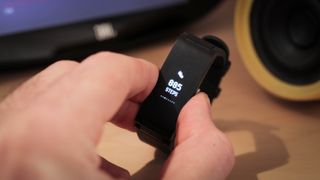
The default screen displays a digital clock that fills the display, is easy to read and it fires up reliably with a simple wrist raise. It isn’t customizable and there’s no way to choose a custom watch face in the app either, so what you see is what you get, for the time being at least.
Below it sits the date, as well as a bar indicating how you’re doing with your activity goal for the day.
Once on, the screen can be interacted with in one of two ways - a tap anywhere on the fascia, or with a press of the right hand button. The screen doesn’t fire up when you tap it from off - only doing so after a wrist raise or button press, so we didn’t find it fired up at inopportune times, like in the cinema.
In addition, the raise gesture works reliably, despite there being a slight delay before the screen illuminates. It also only stays lit up for about a second, unless it’s displaying a notification or is interacted with - so it’s made to be glanced, not gazed at.
Image Credit: TechRadar
Basil Kronfli is the Head of content at Make Honey and freelance technology journalist. He is an experienced writer and producer and is skilled in video production, and runs the technology YouTube channel TechEdit.
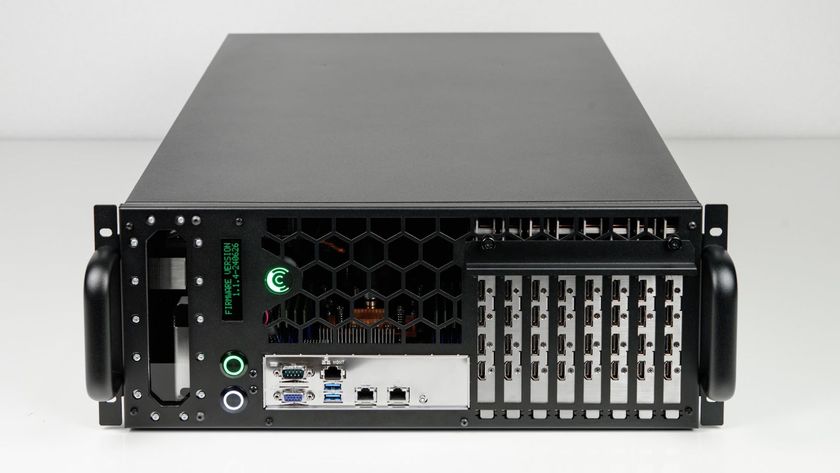
Comino has workstation PCs with 8, yes 8 Nvidia RTX 5090 GPUs, for less than $60,000 - but that’s not the best news
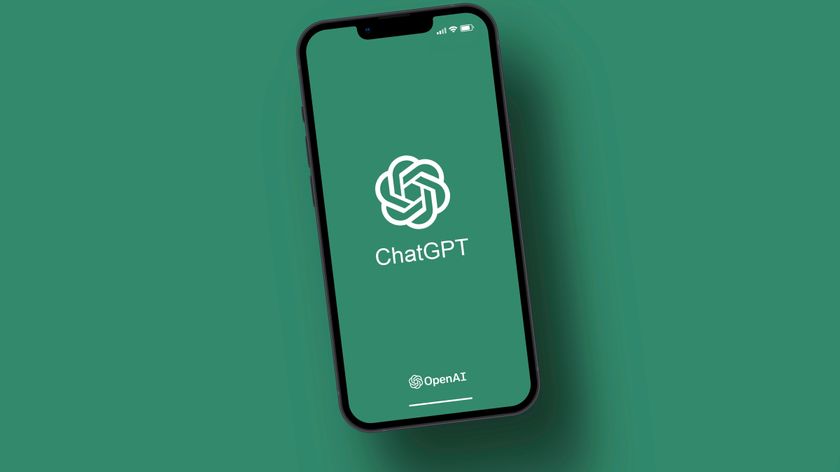
OpenAI just updated its 187-page rulebook so ChatGPT can engage with more controversial topics
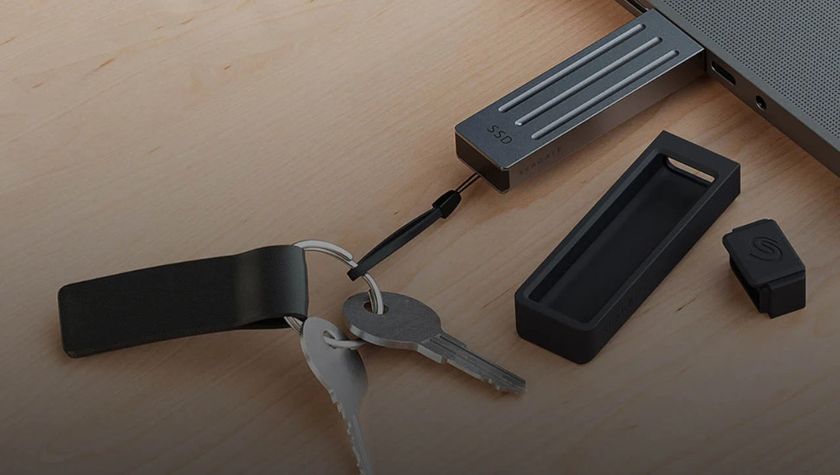
Seagate contributes to the slow demise of flash drives with an SSD that looks like a thumb stick
Most Popular






